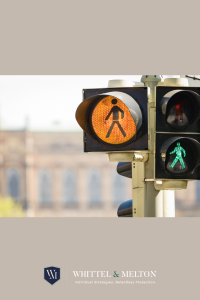According to a recent study by traffic safety technology provider Altumint, Florida has the third-highest rate of pedestrian traffic fatalities nationwide.
The Road Safety Report from Altumint looks at both county- and state-level accidents, offering an unparalleled look at Florida’s road deaths. Speeding accounts for 25% of road fatalities in the US, and most drivers in Florida acknowledge that they break the speed limit in school zones, endangering Florida’s school-aged children. To put this into perspective, if a pedestrian or cyclist is struck by a driver travelling at 40 mph, their chances for survival are approximately 10 to 15 percent.
Here are the areas in Florida that are the most dangerous following this 12-month reports from 2022:
Urban Counties
Miami-Dade County: 82 pedestrian deaths
Broward County: 68 pedestrian deaths
Pinellas County: 27 pedestrian deaths
Rural Counties
Suwannee County: 5 pedestrian deaths
Hamilton County: 3 pedestrian deaths
Dixie County: 2 pedestrian deaths
This report comes one day after the Florida Department of Transportation (FDOT) unveiled a new pedestrian safety feature for Seminole County. While the Orlando region is not considered a huge area of concern in the Road Safety Report from Altumint, Central Florida was found to be the most unsafe area to walk in previous studies. The area is currently ranked eighth.
The pedestrian hybrid beacon (PHBs) revealed from FDOT is the first of its kind in Seminole County and will be featured in Sanford along U.S 17-92.
The purpose of the PHBs is to display bright flashing lights that turn on when a person presses the button to cross is to improve safety for cyclists and pedestrians. A yellow flashing light indicates that drivers should start looking for bikers and pedestrians. When a solid yellow light is displayed, this indicates that it is time for drivers to prepare to stop. A red light indicates that drivers are stopped.
Officials hope that pedestrians will use it and that automobiles will slow down when people are there.
Several PHBs have already been established in Florida; you may have seen them in Daytona Beach next to Daytona State College and on Orange Blossom Trail.
PHBs (also known as high-intensity activated crosswalk HAWK beacons) are distinct from flashing beacons or pre-timed traffic signals in that they do not start working until a pedestrian presses the call button.
The beacon flashes yellow for a short while when it is pressed by the pedestrian, then stays yellow for a while longer before turning red. Drivers must stop completely and wait at the stop line when there is a continuous red light. Pedestrians can cross the road safely since the walk sign is illuminated while cars observe the constant red indicator.
How Do Pedestrians and Cyclists Use PHBs?
To operate a pedestrian hybrid beacon (PHB), pedestrians must:
- Press the signal’s button.
- Observe the crosswalk pedestrian signal.
- Cross only when the walk signal is activated.
How Do Motorists Use PHBs?
When driving up to a PHB signal, drivers should do the following:
- The yellow light will flash; when it does, slow down and get ready to stop.
- When the yellow light turns solid yellow instead of flashing, stop if it is safe to do so.
- When the solid red light appears, stop completely to let people cross.
- When the signal flashes red, continue to stop.
- Once the crosswalk is clear, proceed cautiously.
Injured in a Pedestrian Accident in Florida? Let Us Help – 866-608-5529
If you or a loved one has been injured as a pedestrian or cyclist anywhere in the state of Florida, let our Florida Pedestrian and Cyclist Accident Attorneys at Whittel & Melton help you learn more about your rights and explore what can be done to help you recover financial compensation for your suffering. Call us today at 866-608-5529 or contact us online for a completely free and confidential consultation.
 Florida Personal Injury Lawyers Blog
Florida Personal Injury Lawyers Blog


